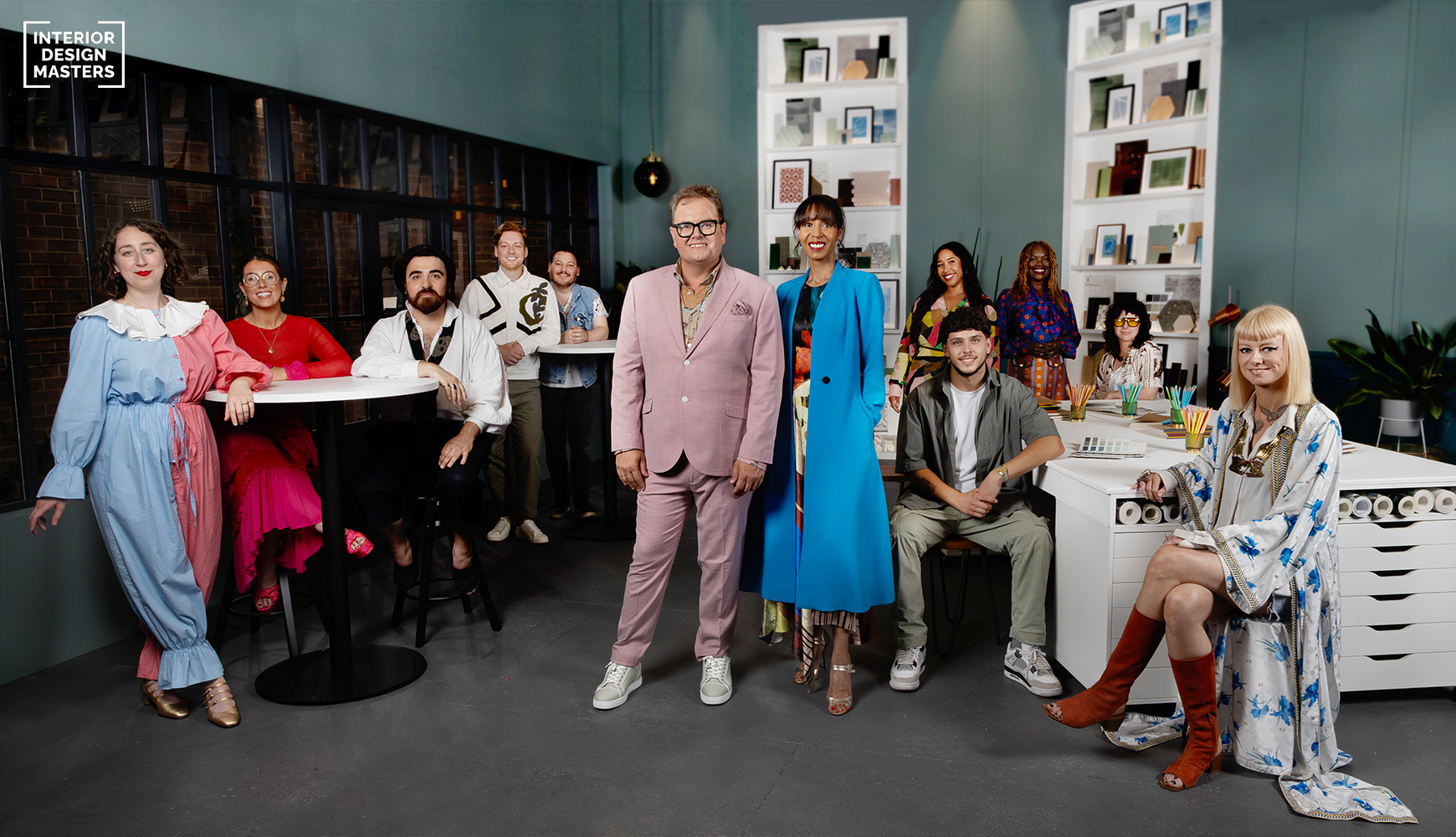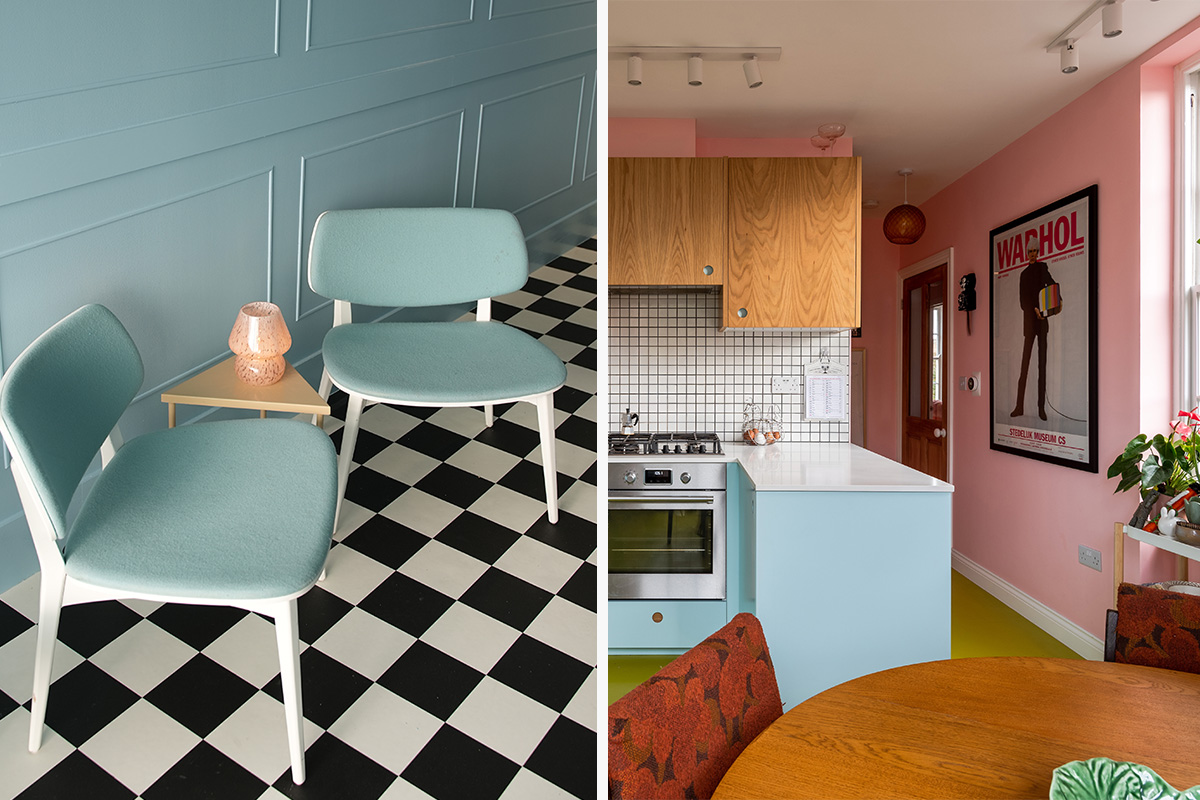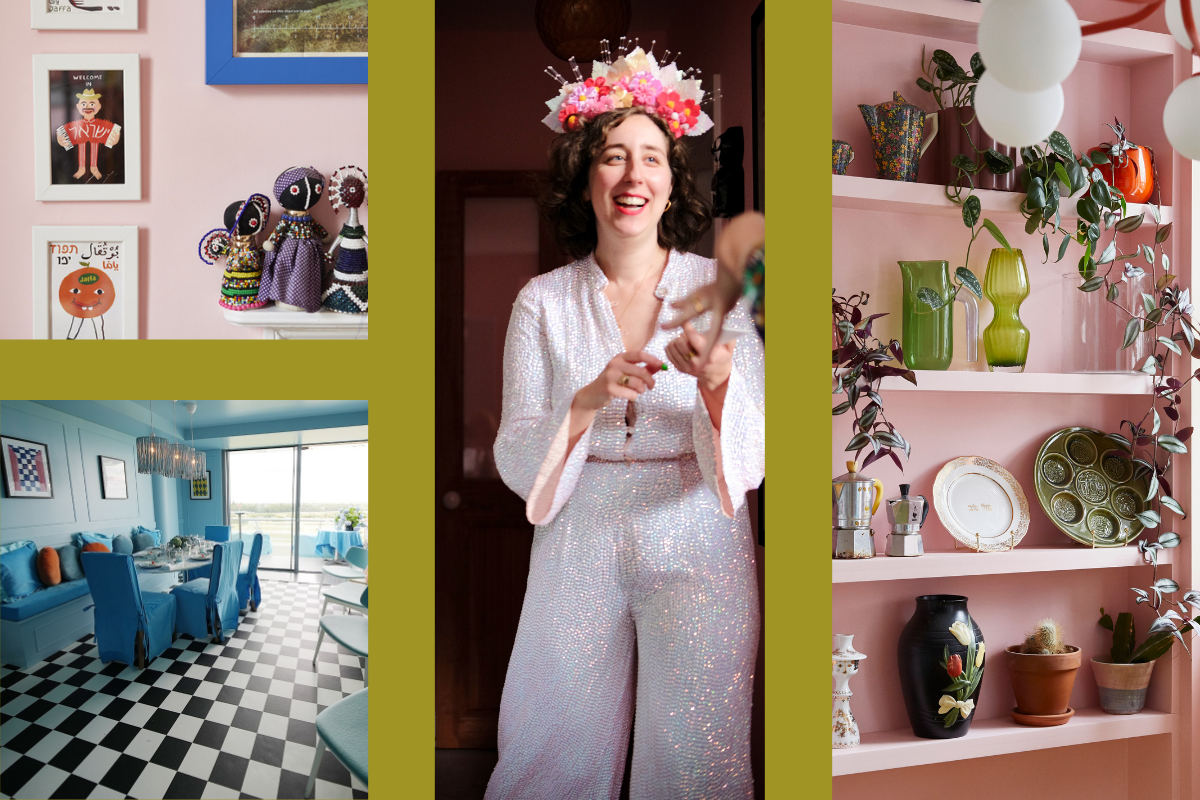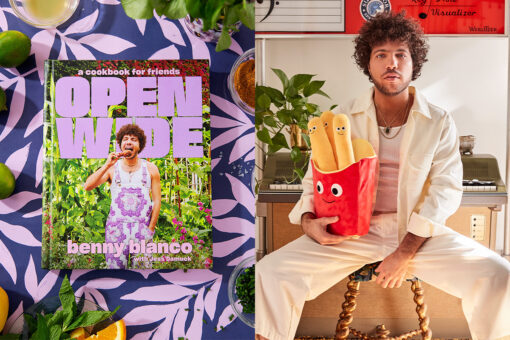It’s Tuesday night, it’s primetime, it’s Ascot Racecourse on the BBC. I, the first overtly Jewish contestant on the BBC’s “Interior Design Masters with Alan Carr,” am dancing the hora while singing “Avinu Shalom Aleichem” in a beret and a pair of bright blue shorts. I’m kvelling, my mum is kvelling, the entire diaspora of British Jews is kvelling.
“Interior Design Masters” is an interior design competition where ten aspiring interior designers transform real commercial spaces in a bid to win a commercial contract. After closing my craft business and having a baby in lockdown I found myself on a never-ending maternity leave, struggling to balance getting back into the creative world and managing childcare, so I thought: Why not apply? I love interior design and I’ve never seen anyone like myself on British TV. There are less than 300,000 Jews in the U.K. — a relatively tiny percentage of the global diaspora — and we are so assimilated to British culture that most Brits have no idea that some of their favorite British celebrities are in fact Jews. When I got onto the show I knew that I wanted to represent my Jewishness loudly and proudly on the BBC, for all of Middle England to see.
I wore my Star of David and Hebrew name plate on every episode, despite how often they interfered with my microphone. I was close to wearing an incrementally bigger Star each week, just in case none of my Yiddishisms or mentions of Hanukkah made the edit. I genuinely don’t know the last time I saw another contestant or presenter on a British show wearing a symbol that explicitly represents Judaism or being openly Jewish. Even on the British comedy show “Friday Night Dinner,” which borrowed heavily from the writer’s Jewish upbringing, I think there was one episode in six seasons where Judaism was even mentioned; no Yiddish, no kiddush and definitely no Star of David. For me, this is typical of any inclusion of Judaism on British television; it’s Jewish, but don’t let anyone watching know that.

Denying what I am is not my thing. It has taken me years to find the balance between my British and Jewish identities, and now that I am comfortable in my own skin, I want to represent that confidence to anyone struggling with the same internal conflict. As I started designing, I realized that this defiance holds a place in my style as well as my personality. I love all things kitsch, bright, playful and even silly. I long to live in a chic Pee-Wee’s Playhouse (I wonder what the mezuzah would sound like!). I have often been told that my design style is “a bit much” or “a bit childish,” when really it represents me and actually makes many people happy. I believe so much of the interior design world is constricted by what we are told constitutes “good design,” most of which is dull neutrals and minimalism — I refuse to look at another grey wall and hear someone call it “stylish.”’ Fun design is treated as less sophisticated, less respectable even. On the show, I wanted my designs to challenge that perspective. My mission was to be overtly Jewish, win the show and all the while challenge outdated perspectives of what makes “good” design. My people wandered the desert for forty years and survived; how hard could this be?
In episode one, the duality in my style was underrated by the judges as they didn’t understand my blending florals with bright stripes. I saw my design as a perfect blend of opposing but complimentary ideas. That conversation wasn’t unfamiliar to me; I don’t think I’ve ever felt totally accepted for my duality as an extroverted Jew growing up in the U.K. or as someone who relishes in bright, playful and silly design. My own home blends bubblegum kitsch, humor and bright colours, vintage Judaica, florals and as many posters of Barbra Streisand as I have space on my walls (and yes, my big “Yentl” poster made it onto the show). By Episode 3 I felt like I had the judges on side; my room in Ascot was both kitsch and elegant, uplifting, original and still had a sense of fun and color, something that no other room in the top that week really managed.
One of my most cherished moments while filming was meeting one of my Jewish interior design heroes, Jonathan Adler. Adler’s blend of architectural design with kitsch, playful color and silliness is basically everything I aspire to, not to mention his line of kooky Judaica is the stuff my dreams are made of. After the winner was announced, all of the designers and judges came together to cheers. Adler sidled up to tell me, “I love your dress,” which I had made and designed myself to look like a very chic and fancy clown. “I love your sausage dog menorah,” I replied. Adler asked, “Are you one of mine?” and we proceeded to have the dreamiest, Jewy-ist conversation about Jews in the U.S. versus the U.K., Judaica kitsch and of course, circumcision. We were mic’d up throughout so here’s hoping those tapes one day make it to the Jewish Museum.

One of the amazing things about partaking in a reality show like this is definitely the people you meet. So who was I dancing the two-person hora with in episode three? Fellow Jewish designer and contestant Benat Irurzun Pineda! Ben and I became fast friends on the show as soon as I saw his antique tallit case which he’d transformed into a sewing bag, and we formed a “travelling band” which we named Super L’Chaim. On the long drives between locations Ben and I could be heard screaming the lyrics to “Matchmaker Matchmaker” and “Papa Can You Hear Me?” up and down the British Isles so loudly (and so off-key) that I’m surprised the windscreen of my rental van survived.
There were of course many more of my Jewish moments that didn’t make it to the final edit. I went off on a whole spiel about the Talmud on the sofa one episode, and made many mentions to conferring about designs with my rabbi, but it was all sadly left on the cutting room floor. I will never forget the confusion on Alan Carr’s face when I ranted about how my Judaism led me to question my design choices. I was living my best yeshiva fantasy but I’m not sure the rest of the U.K. watching at home would have quite understood where I was coming from.
The prize for the show is to design your own homewares line; the drive to convince a giant retailer to produce a line of kitsch British Judaica kept me going on those long shoot weeks away from home. I created very fun, colorful and well-executed spaces on the show, and am proud of what I produced throughout the season — but I’m most proud to have been my authentic Jewish self on the BBC.
“Interior Design Masters” season five airs every Tuesday night from March 12 – April 30 on BBC One. Episodes are available to watch on BBC iPlayer after they have aired.



